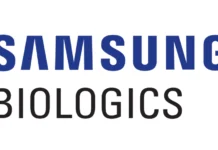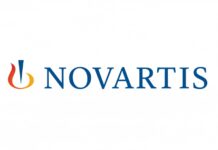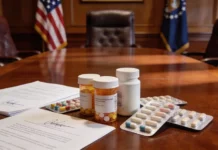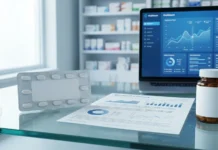In this article, Dr. Robert Lee, president, Lubrizol Life Science Health (LLS Health) – CDMO Division, explores why every drug development project is unique when it comes to enhancing bioavailability and discusses how companies can overcome bioavailability challenges and deliver on their Target Product Profile (TPP).
Every drug development project should begin with a TPP – a comprehensive description of the proposed drug product and the characteristics it needs to successfully meet its therapeutic goals. The TPP allows development to begin with the end-goal in mind and guides R&D activities and decisions. It often includes:
- Active pharmaceutical ingredient (API) characteristics
- API loading in the product
- Dosing frequency
- Intended use and route of administration
- Proposed critical quality attributes (CQAs)
- Target patient population
Achieving the desired TPP depends on a number of factors. One of the most important being the bioavailability of the API. This is directly impacted by the API’s solubility and rate of dissolution. If an API has poor water solubility and/or a low rate of dissolution, this impacts how the ingredient will be absorbed into the body, and in turn the overall drug product’s effectiveness. Unfortunately, poorly soluble APIs are becoming more and more common – with around 40% of drugs currently on the market and up to 90% of those in the discovery pipeline, suffering from this issue[i].
With this in mind, it is important that drug developers have a solid understanding of factors influencing bioavailability – such as route of administration, physicochemical characteristics of the API, and dosage requirements. As no drug is the same in terms of these factors, a “one-size-fits-all” approach cannot be relied upon. Developers must be flexible and select an appropriate formulation approach on a case-by-case basis.
Deciding route of administration
The route of administration will impact the bioavailability of the API, with implications for other aspects of the TPP, such as dosing frequency. Orally administered drugs, for instance, may face bioavailability challenges due to poor water solubility, unfavorable LogP (lipophilicity), transporter effects, food effects, degradation (chemical and enzymatic), and first-pass metabolism, whereas intravenous (IV) drugs are considered to be 100% bioavailable[ii].
The route of administration should be decided early in the development campaign, as it will inform other areas of development, such as dosage forms and dose requirements.
Steps to improve solubility
Finding ways to overcome bioavailability challenges posed by the solubility of the API or the limitations of the route of administration is crucial to reach the TPP. There are many different methods to improve bioavailability and selecting an ineffective approach can cost both time and money. Drug developers can use the information in the TPP to narrow down the list of choices. Some potential approaches that mayenhance API solubility include:
-
Nanomilling
This is a popular solution to address solubility issues in oral, injectable, topical, and inhalable drugs. A scalable approach, nanomilling reduces particle size by suspending the API in a solution of water and stabilizers, then physically breaks down its crystalline structure, thereby converting large coarse particles into smaller fine ones to create a nanoparticulate suspension (or nanosuspension). This process increases the surface area and improves the dissolution rate of the API, and consequently improves bioavailability.
Careful consideration of stabilizer characteristics is essential to the formulation of nanosuspensions. Their physicochemical properties can influence aggregation, fast sedimentation of particles, and cake formation during milling or storage. They can also impact the potential for Ostwald ripening – a spontaneous process wherein the mean particle size grows over time as small particles dissolve and redeposit onto larger ones, with implications for particle size and uniformity.
Nanomilling is an efficient and reproducible process but may not be an appropriate technique for all APIs. Feasibility programs, like the one offered by Lubrizol Life Science Health (LLS Health), can quickly determine if nanomilling is a suitable technique, saving both time and expense during the drug development journey.
-
Amorphous solid dispersions (ASDs)
Another approach to enhance the solubility of an API – and therefore improve bioavailability – is the use of amorphous solid dispersions (ASDs). ASDs comprise of an amorphous active pharmaceutical ingredient stabilized by an excipient matrix to provide greater stability against phase transitions to a crystalline state.
Amorphous solids enjoy higher solubility rates than crystalline solids, due to their higher thermodynamic potential. Combining them with a polymer carrier can enable long-term storage and stability, as well as better dissolution properties as compared with pure amorphous or crystalline drugs[iii].
ASDs can be prepared using formulation methods such as hot-melt extrusion or spray drying. Throughout these methods, APIs are often exposed to high temperatures and shear. Some APIs are particularly sensitive to stresses such as heat and chemical degradation can result. Therefore, particular attention must be paid to API melting point, glass transition temperature, thermal lability, and tolerance to shear force when formulating amorphous drugs.
-
Encapsulation
Encapsulating APIs with nano- and micro-scale carriers is another way to enhance bioavailability. This process not only helps overcome solubility issues but can also protect drugs from degradation in harsh environments, allow sustained release over time, or targeted delivery. Encapsulation methods are particularly useful when APIs are hydrophobic or when large molecules require protection. By encapsulating them within a hydrophilic matrix, it is possible to suspend them in an aqueous solution, enabling effective absorption by the body without loss of API.
Like ASDs, encapsulation of APIs requires the use of methods where heat and shear force may be applied. As such, encapsulation may not be appropriate for APIs that are sensitive to heat or degradation from shear and similar stresses. Other methods, like coacervation to encapsulate droplets, are pH-dependent – APIs that are sensitive to acidic or alkaline environments may not be suited to these approaches. With this in mind, consideration with regards to the characteristics of the API will be needed to determine whether encapsulation is the best approach to solving bioavailability challenges for each individual project.
-
Chemical modification
There are many different ways APIs can be chemically modified to improve their poor water solubility, thereby enhancing bioavailability. These include:
- pH modification: using acidic or basic excipients to enhance solubility of ionizable APIs
- Salt formation: converting APIs into salts, as many APIs are more soluble in salt form
- PEGylation: covalently conjugating polyethylene glycol, a polymer with high aqueous solubility, to APIs
However, it is important to remember that API chemical modification methods are heavily reliant on knowing the initial characteristics of the API, further supporting the use of TPPs throughout development.
A look to the future
With so many drugs in the discovery pipeline suffering from poor water solubility, it is important for formulators to find a CDMO with access to next-generation innovations and experience in a wide range of enhancement methods. As new techniques and novel excipients become available, companies can be confident that with the right partner they can overcome the most complex formulation challenges and develop effective treatments for the world’s patients.
References:
[i] Kalepu S, Nekkanti V. Insoluble drug delivery strategies: review of recent advances and business prospects. Acta Pharm Sin B. 2015;5(5):442-453.
[ii] Reference: Thakkar Hetal, Patel Bindesh, Thakkar Sneh, “A REVIEW ON TECHNIQUES FOR ORAL BIOAVAILABILITY ENHANCEMENT OF DRUGS”, Intl Journal of Pharmaceutical Sciences Review and Research, Volume 4, Issue 3, September – October 2010; Article 033.
[iii] Kanaujia, et al. 2015. Amorphous formulations for dissolution and bioavailability enhancement of poorly soluble APIs. Powder Technology, Pharmaceutical Particle Technology 285, 2–15.






















